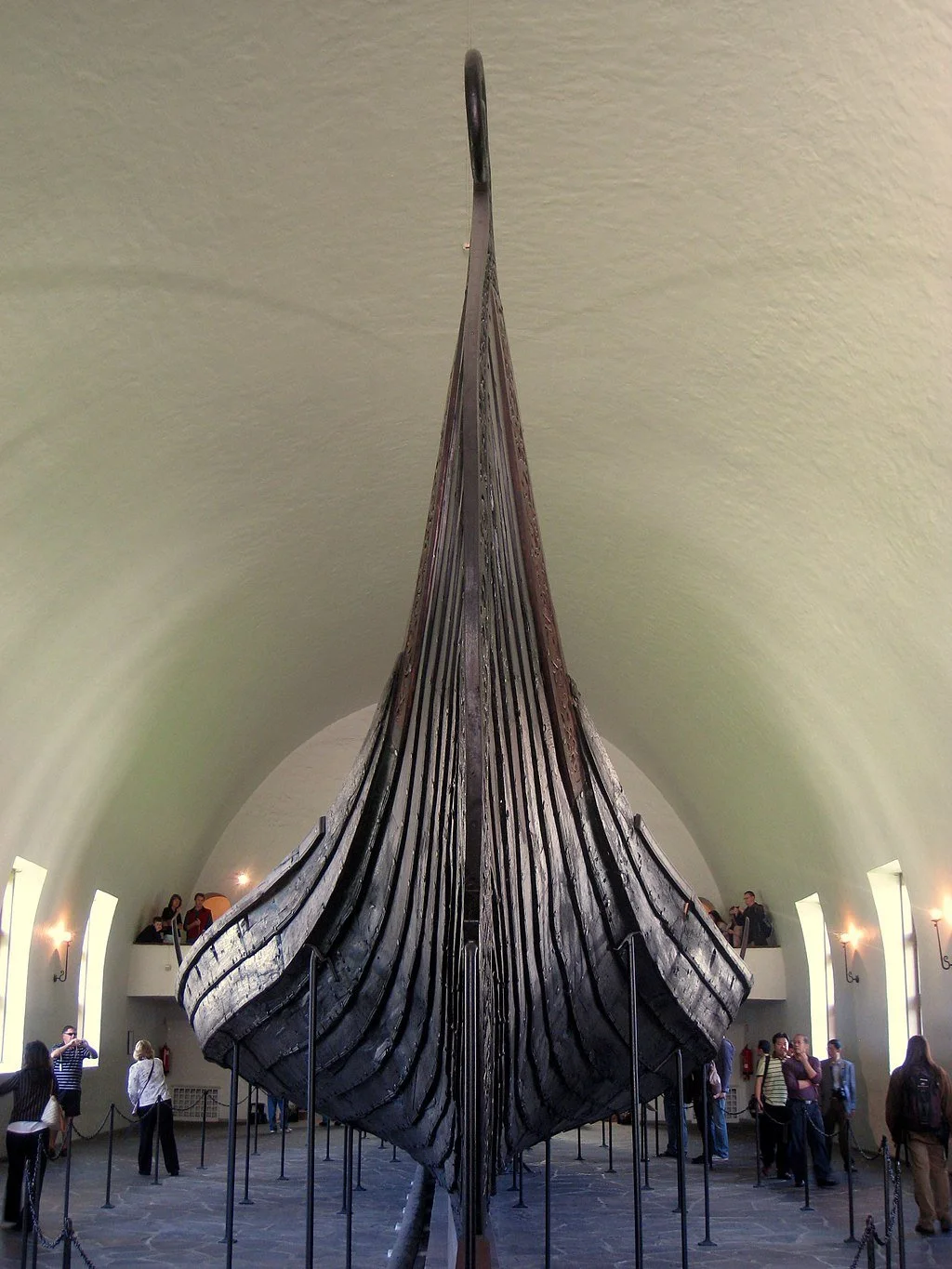
S2:E2
Bury Me In My Boat
How “Viking” Were the Rus’?
Ship Burial Across Europe
image: Frank Dicksee, Funeral of a Viking (1893) (public domain via Wikimedia Commons)
A majority of cultures around the world from antiquity to the modern age envision some kind of afterlife. As such, funeral customs are often designed with that afterlife in mind - ensuring passage to another realm and providing items the deceased may need when they get there.
Ship burial, popular among coastal peoples from Europe to Asia, was a way to send the deceased off to the realm of the dead with everything they would need to start their new life.
Not only was a proper funeral essential for ensuring a good afterlife for the deceased, it was critical for the deceased to reach the afterlife in the first place. Lack of proper burial, mismanaged funeral rites, and desecration of the body could, it was believed by many peoples, prevent the deceased from “resting in peace.”
The Importance of Proper Burial Rites
image: illuminated illustration of Norsemen invading England, from the Miscellany on the Life of St. Edmund, 12th c. AD, (public domain via Wikimedia Commons)
In seafaring societies, the importance of boats is evident. Movement of people and goods over water was much faster and often easier than crossing large stretches of land. Trade, migration, and military activity were all enhanced by naval technology. Ancient Mediterranean cultures who prioritized the development of ships dominated the region - Athens’ rise to power coincided with its shipbuilding advances, while Rome’s replication of Carthaginian war ships led to its domination of the western Mediterranean for centuries thereafter.
The people we know as the Vikings, really a collection of seafaring peoples who traveled across Europe and beyond during the early medieval period, are primarily remembered for their naval technology. Viking war ships were fast and easy to steer, while cargo ships could carry a high volume of goods for trade. These boats - the best in Europe at the time - carried groups of raiders and traders into unknown lands as they wrought havoc on their neighbors, securing control of ever-more territory for themselves. That ships were so important for Viking life, longevity, and culture made them an obvious choice for funerary rites.
Not everyone had the means to be buried in a ship. This type of funeral was reserved for wealthy and elite members of society. Sometimes ships already in use would be employed for this purpose, and on other occasions boats would be commissioned specifically for funerary use.
Why Boats?
The Oseberg Ship is one of the best-preserved Viking ship burials. Excavated in Norway at the start of the 20th century, the vessel was the final resting place of two women, one in her 50s and the other in her 80s.
The women were buried with a large number of valuable grave goods, including gold and wooden objects. The richness of the accompanying items suggests that the women were well-off in life.
The Oseberg Ship
image: the Oseberg Ship on display at the Viking Ship Museum, Oslo, Norway (public domain via Wikimedia Commons)
image: excavation of the Oseberg Ship led by Gabriel Gustafson and Haakon Shetelig, 1904-1905 (public domain via Wikimedia Commons)
The Extent of Viking Activity
image: the Tjängvide image stone, Sweden, ca. 700-900 AD (Berig, via Wikimedia Commons)
Carried by their powerful ships, the Vikings made their way across Europe, ranging from the British Isles and Iberian Peninsula in the west to Ukraine and Russia in the east, where they were known as Varangians and the Kievan Rus’. Beyond Europe, Viking activity has been documented in central Asia and as far as Greenland. They were well-acquainted with the Mediterranean, traveling to Sicily in the 9th century and later.
Because the Vikings spanned such a large geographical region, their culture spread, adapting to whatever new environment they found themselves in. Ship burials in the areas of Viking activity are all slightly different, reflecting the new places and peoples they encountered.
image: Viking activity (background added) (public domain, via Wikimedia Commons)






